Hypermarket
French photographer Denis Darzacq reminds us of the freedom that escaping materialism brings, even when we are left to wonder: Are these figures floating or falling?

Interview by Nozlee Samadzadeh
How did you get the idea for Hyper?
It came from another series I’d made two years before in 2006 called La Chute (The Fall). It was just after the riots in France, and all the media was saying that the youth from working-class areas didn’t have any discipline or sense of work, and that instead they were fighting. And suddenly I found some hip-hop dancers and Capoeira dancers near my house where I live in a working-class area of Paris, and I asked them to jump in the streets and suddenly to freeze the movement, in between flying and falling. Continue reading ↓
All photographs © Denis Darzacq, all rights reserved. Images courtesy Laurence Miller Gallery, New York.
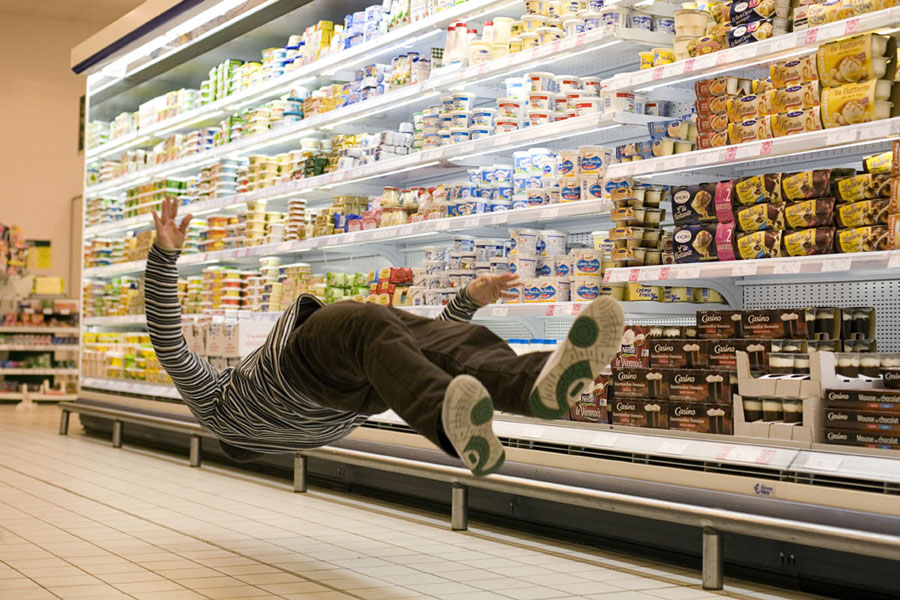
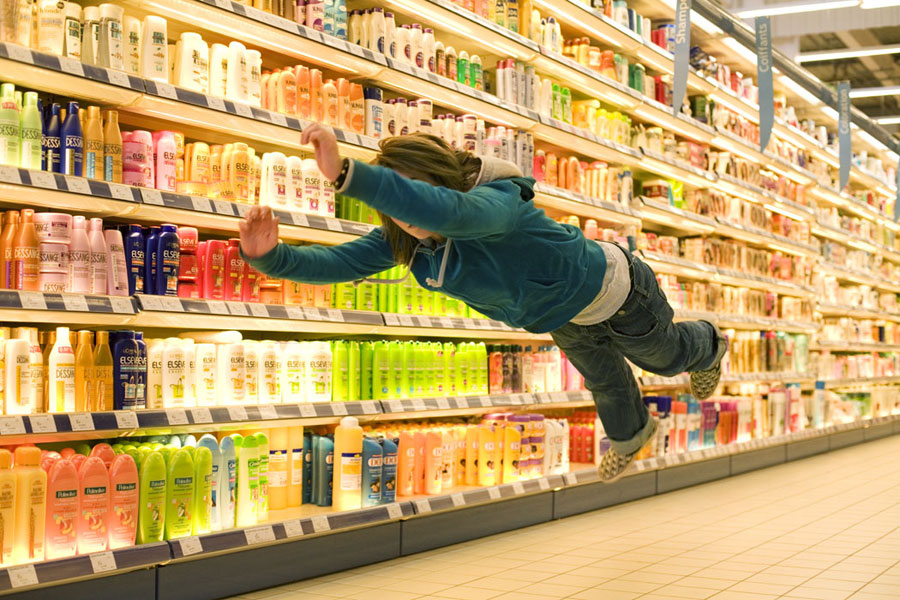
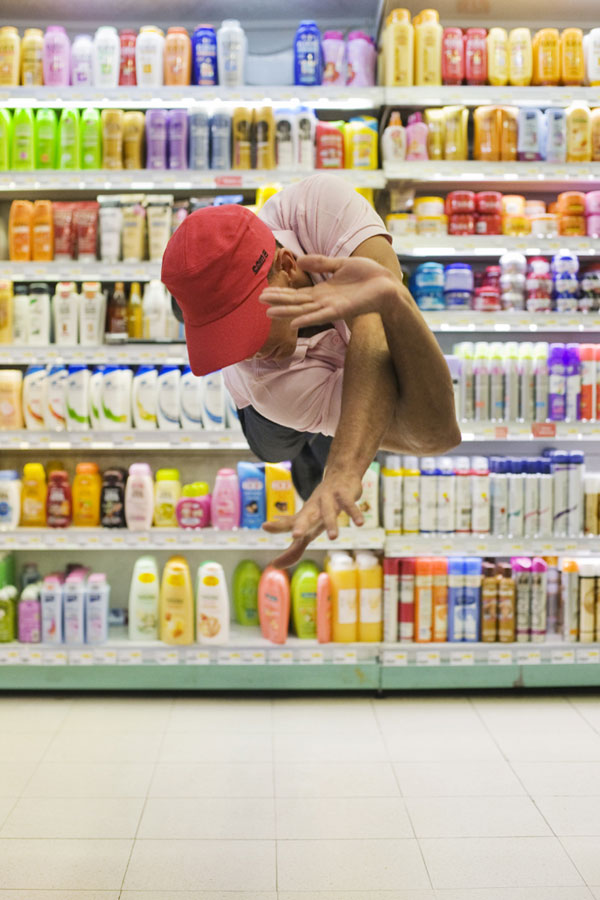
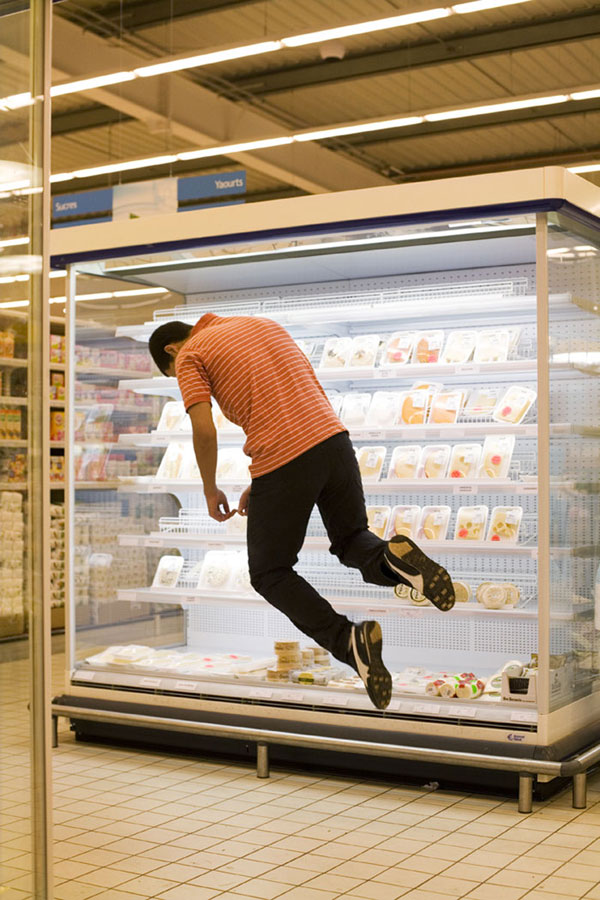
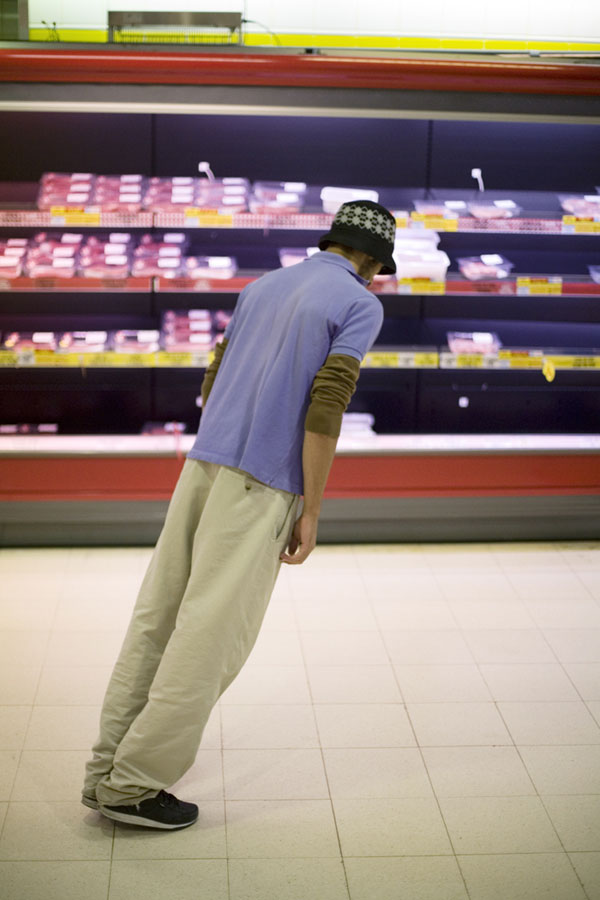
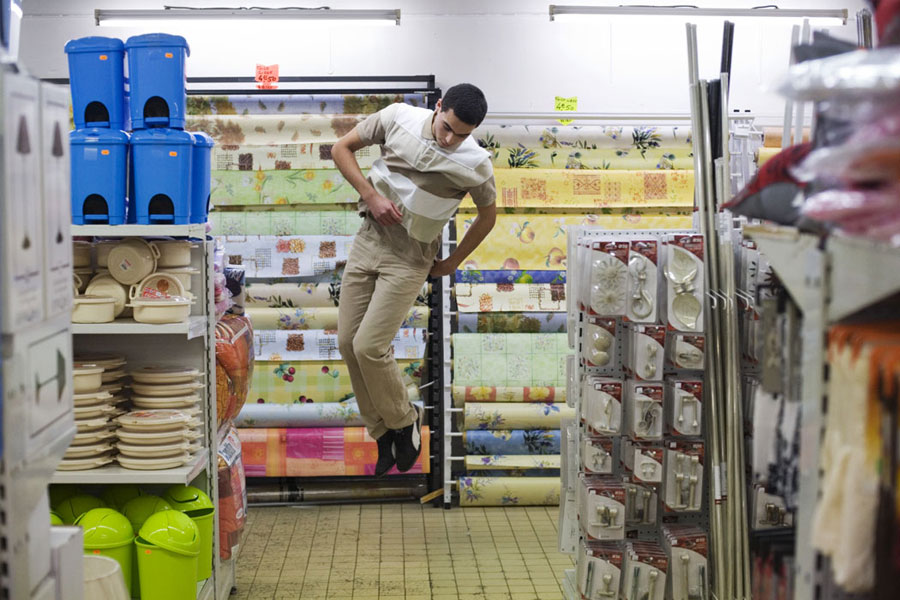
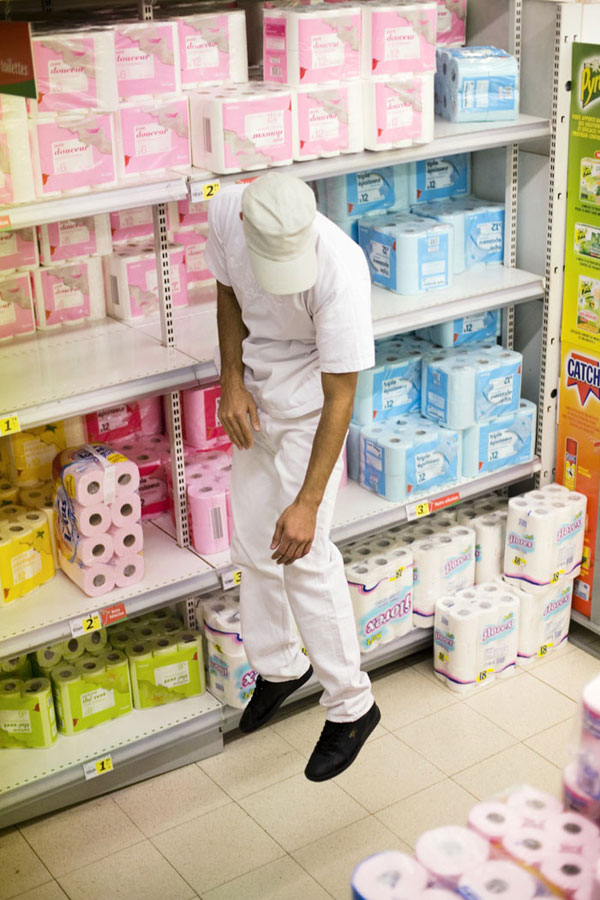
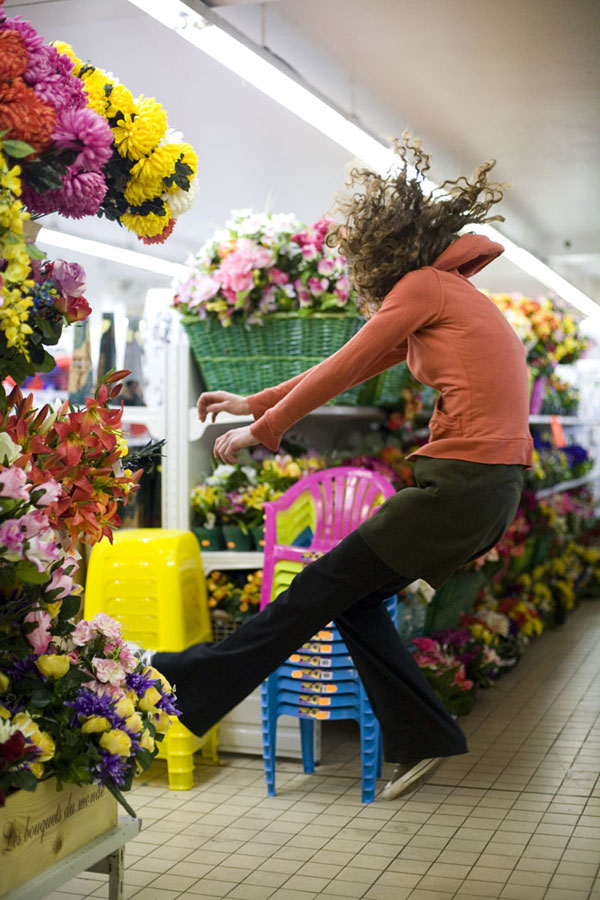
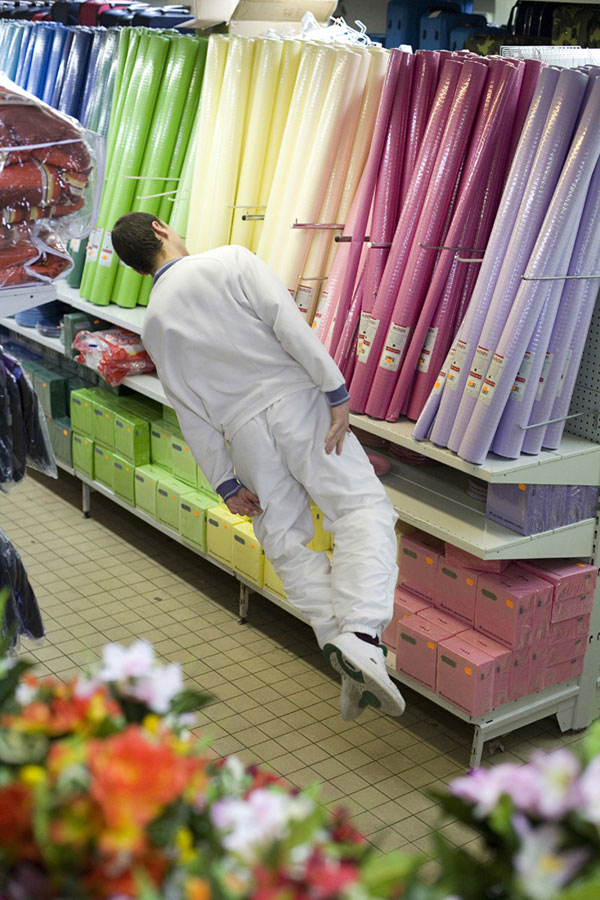


Interview continued
This was my response, my way of talking about the riots in France. How are we going to take care of the younger generation? Are we going to let them fall, or are we going to take care of them? And all of them, or most of them, are immigrants. My idea is to try to find a place, to find a balance in this society. How can we live in this society where they aren’t very accepted? This was La Chute.
Now I decided to develop this idea in the supermarkets. In my mind, it was this opposition between having and being. To be and to have. In society now, we know that it is not the complete solution to have a lot of goods. There is also a sense of morality—the way to be a man is not only to have things. And then this tension between having and being, it’s floating in the air in this materialistic society. This was interesting for me.
Describe a shoot.
When we do a shoot, we go to the supermarket, but not such a big one—big but not so big. They asked me to come to the supermarket very early in the morning before opening, around six or seven o’clock in the morning. And the young person came, and I’d ask them to make this street-type kind of jump, one very inspired by La Chute, where people are floating in the air. The second type of attitude was feeling like it was a fight, like a punching ball. Really to express the violence of this consumerist society to be like an aggression.
And for the third type of image, I asked them to look at the mannerisms in Baroque paintings: really fake movements, but everybody knows that its fake and we like the fact that it’s fake. The fake movement is almost more real than these supermarkets. Making fake movements that don’t mean anything are suddenly like a freedom, because if it doesn’t mean anything then it’s a liberty movement. It’s not for sale, it’s free. You don’t have to pay for that. It’s very paradoxical that in this kind of environment when you’re jumping, it’s a free movement in a very materialistic world. It’s very paradoxical in a way and that’s what I like in my images.
What is the French attitude toward supermarkets?
In France we call them hyper-markets. Hypermarché. There are no more smaller shops. All the centers of little towns in France are completely deserted. You have all these big malls everywhere, for 25 or 30 years now. It’s crazy. It’s dispiriting. Nobody goes into the center of town anymore, just having a coffee or having lunch. Everybody takes a car and goes to the shopping centers. It’s the same in the U.S.A., the same in India, the same in China.
What is life like for the dancers you’re working with?
They don’t have jobs! They are 22, 23 years old, and no hope to have a job. There is huge, huge unemployment in France—something like 10 percent of people are unemployed. And most of them are immigrants and they don’t have any jobs. And when there is something to do, it is very bad pay—I would say, $500 a month for doing shit work. They don’t really have money and they don’t know how to survive, how to create a family, how to live, even. They don’t know how to live. Then, it’s also this opposition of trying to escape this materialistic world, trying to do something with your life when you don’t have any money.
And they’re not really dancers! Mostly they’re just young. You can remember well, when you’re young, body language is your language. I’m now more than 40 and my language is photography. Your language is journalism, interviews, a web site. But when you’re 20, you express yourself with your body. And suddenly there’s the fact that if you have a little time with dance, you can make all the jumps you want.
What are you working on now?
My next series that I’m shooting this week and next week is going to be almost the same. You know the upholstery supermarkets? There’s lot of color: red, yellow, brown, gray. It’s like a Rothko painting. I’m going to ask them to jump in front of this and the way they’ll jump is less Baroque—not so exterior but more interior, introspective in feeling. This is the future of the series.
